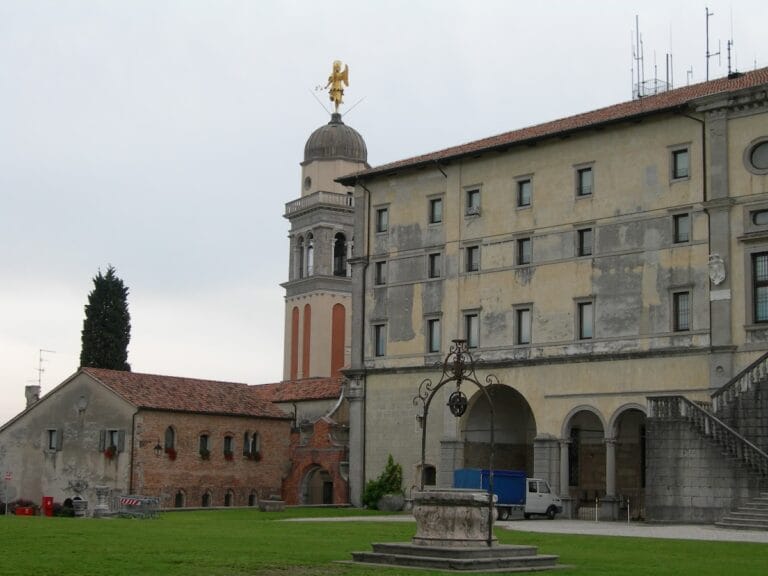Castello Partistagno: A Medieval Fortress in Attimis, Italy
Visitor Information
Google Rating: 4.4
Popularity: Low
Google Maps: View on Google Maps
Official Website: www.visitattimis.it
Country: Italy
Civilization: Unclassified
Remains: Military
History
Castello Partistagno stands above the village of Borgo Faris within the municipality of Attimis, Italy. This medieval fortress was constructed around the year 1000 by the local civilization overseeing the Friuli region during the early Middle Ages.
Initially, the castle belonged to the Counts of Attems, a noble family controlling the surrounding lands. Over time, ownership transferred to the Lords of Faedis, another regional aristocratic lineage. By 1273, the stronghold had become the possession of the Cucagna di Partistagno family, who maintained control over the site for several centuries. In the 17th century, the castle passed into the hands of the Fullini family, originating from Polcenigo.
From the 16th century onward, the fortress gradually fell out of use, reflecting broader shifts in military and residential needs. The site was slowly abandoned and entered a state of decay. Despite this decline, the castle garnered literary recognition when it was mentioned in Ippolito Nievo’s historical novel, *Le Confessioni d’un Italiano*, highlighting its cultural presence in Italian heritage. Following severe damage caused by the 1976 Friuli earthquake, restoration efforts focused on preserving the core summit structures of the ruined castle, safeguarding its historical remains for future generations.
Remains
The ruins of Castello Partistagno reveal a complex structure built in stages from the early medieval period onward. At the summit lies the original core, comprising a bergfried—a main defensive tower typical of medieval castles—which dominates the site. Adjacent to the tower, a noble chapel dedicated to Saint Oswald holds particular historical and artistic interest. This church preserves a 13th-century noble chapel in its apse, resting atop the remains of an earlier 11th-century proto-Romanesque religious area. Excavations uncovered a pointed-arch apse on the chapel’s south side, confirming this lineage. The chapel’s iconography includes frescoes spanning several centuries: late 13th-century depictions of Saint Christopher, a late 14th-century apse showing Christ Pantocrator alongside the Twelve Apostles, and an early 15th-century Crucifixion fresco adorning the tympanum above the entrance. These artworks trace a continuous devotional tradition and stylistic evolution tied to regional artistic schools. The chapel underwent enlargement in the 16th century, resulting in its present form.
Below the summit complex stands the Palatium inferiore, a substantial palace dated to the early 14th century. This building stretches roughly 41 meters in length and 11 meters in width, rising across four floors: a basement, a noble floor featuring two projecting latrines, a residential floor equipped with niche washbasins, and a final attic level. Its walls were originally covered with plaster inside and out, while the floors consisted of opus signinum—a waterproof mortar made from crushed pottery—laid atop wooden boards. Over time, the interior was subdivided by three walls and underwent floor renovations. Restorations beginning in the early 1980s removed the internal partitions, rebuilt some of the original double windows known as bifore, and renewed the roof covering. Later work adapted the palace for new purposes, all the while preserving its historical fabric.
Water management within the castle was managed by a large cistern located near the main tower, ensuring a supply of water during sieges or dry periods. To the west of the bergfried stood an additional building forming part of the summit compound, both of which were restored after the 1976 earthquake to sustain the structural integrity of the site. These elements collectively illustrate the castle’s evolution from a fortified medieval residence to a complex maintained across centuries, before its gradual decline and eventual preservation as a significant cultural landmark.










